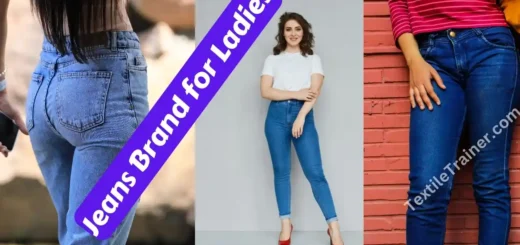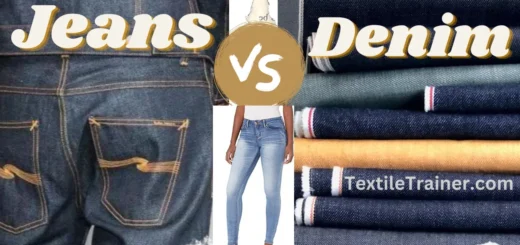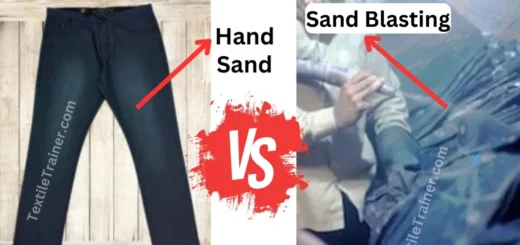Latest 4 Garment Dyeing Techniques: Exploring Different Concepts
Introduction
There are many garment dyeing techniques. But this article aims to discuss the best 4 garment dyeing techniques. Garment dyeing is a technique where fully stitched garments are dyed, rather than fabric rolls. This method enables better color control, production flexibility, and fast fashion creativity.
What is garment dyeing?
Garment dyeing is a process where garments are dyed after stitching of garments instead of grey fabric lots. It has some special benefits. Therefore, this technique is becoming day by day among buyers as well as factory owners around the world. Some crucial benefits are mentioned below:
- In the garment-dyeing process, color choice is flexible.
- This method helps to reduce inventory costs.
- Reduce utility cost as the fully stitched garment is dyed. So, fewer chemicals, less water, and less energy are required in garment dyeing compared to the traditional fabric roll dyeing process.
- It has better color consistency after finishing.
- It helps to create fashion forward looks such as vintage or old looking.
You May Read: How to Towel Bleach Wash in Denim: 15 Step-by-Step Guide
Traditional garment dyeing techniques
Some traditional garment dyeing techniques are mentioned below
- Reactive garment dyeing
- Common for cotton garments.
- It has strong colorfastness properties.
- Usually require hot water, soda, and salt.
- Pigment dyeing
- Pigment dyeing creates vintage or washed-out looks.
- It is used in T-shirts, sweaters, and casual wear.
- sulfer dyeing
- Sulfur dyeing is suitable for darker shades like black.
- It is good for denim and heavy garments.
- Direct dyeing
- Direct dyeing is cost-effective process.
- Direct dyeing has lower colorfastness properties compared to reactive dyes
Modern garment dyeing technique
Though there are lots of modern garment dyeing techniques, but this article will present the best 4 concepts of garment dyeing.
- Florescent pigment dyeing
- wave dyeing
- Tie-dyeing
- Dip dyeing
Florescent pigment dyeing
Today, fluorescent pigment dyeing is a popular method in the market and among buyers. It is one kind of pigment dye, but it differs slightly from traditional pigment. One crucial difference between fluorescent pigment and traditional pigment is that fluorescent pigment contains a high amount of brightening agent. Hence, fluorescent pigment dyed fabric is too brighter than other dyed fabrics. But it has one drawback is that the color fastness properties, especially light and wash, are very poor compared to other fastness properties.
Initially, the fabric was dyed with fluorescent pigment dye. Subsequently, dyed fabric is treated with the binder. The binder is used to fix the pigment with the fabric.
| Date:………………………..Customer name:………Style:…………………Color:………………………… | Weight: 4 kg Qty:…………………….… Process: Flourocent dyeing Machine No: 01 | ||||||
| Process | Chemicals | Percentage (OWF) | g/l | Qty (gm) | Temp (0C) | Time | Water (L) |
| Scouring | Scouring agent | 4 | 160 | 80 | 20 | 40 | |
| Caustic soda | 2 | 80 | |||||
| Rinse | 2 times | Cold | 5 | 40 | |||
| Cationizing | Cationizer | 5 | 200 | 40 | |||
| Dyeing | Fluorescent red | 6 | 240 | 700 | 30 | 40 | |
| Rinse | 2 times | Cold | 5 | 40 | |||
| Binding | Binder | 2 | 80 | 40 | 5 | 40 | |
| Acid | 1 | 40 | |||||
| Softening | Cationic | 5 | 100 | Cold | 5 | 40 | |
Wave dyeing
Wave dyeing is a visual dyeing effect method that creates an irregular and flowing color pattern across garments. It gives an uneven dyeing effect. In this dyeing technique, the seam area of the garments absorbs more dye as it comes first with mechanical contact. This is a kind of special dyeing process that is done by pigment dye and cationizer. Generally recipe for wave dyeing is given below:
| Date:………………………..Customer name:………Style:…………………………Color:………………………… | Weight: 4 kg Qty:…………………….… Process: wave dyeing Machine No: 01 | ||||||
| Process | Chemicals | Percentage (OWF) | g/l | Qty (gm) | Temp (0C) | Time | Water (L) |
| Scouring | Scouring agent | 4 | 160 | 80 | 20 | 40 | |
| Caustic soda | 2 | 80 | |||||
| Rinse | 2 times | Cold | 5 | 40 | |||
| Cationizing | Cationizer | 5 | 200 | ||||
| Dyeing | Bezaprint blue BT | 4 | 160 | 450 | 15 | 40 | |
| Rinse | 2 times | Cold | 5 | 40 | |||
| Softening | Cationic | 5 | 100 | Cold | 5 | 40 | |
Tie-dye
Tie-dye is another garment dyeing technique. Initially, garments are tied with plastic rope according to standard patterns. Now, set the dye percentage. Subsequently, garments tied with rope are dyed. After dyeing, ropes are cut and get an uneven dye effect. Because some parts were tied don’t absorb the dye. As a result, those parts remain similar to the original garment shade. Tie-dye can be done with direct dye or reactive dye.

You May Read: Jeans Tie Wash Recipe: Easy 6 Steps & Industrial Method
Dip dyeing
Dip dyeing is one kind of uneven dyeing process. With this garment dyeing technique, uneven shade appears. Initially, make the dye solution and load it into the dyeing bath. Next, the garments are put into the dyeing bath with the help of a dip dyeing machine. The dip dyeing machine dips some parts of the garments and the residual undyed part dips another color dyestuff. Therefore, more than one color is found in the garments. Generally, reactive dye is used for the dip dyeing process.

FAQs
1. what are the advantages of garment dyeing?
Garment dyeing gives some special benefits rather to traditional roll fabric dyeing. Some benefits are flexibility in small batch production, less utility cost as well as reduced chemical and dyestuff cost.
2. how does tie-dyeing work?
Initially, garments are tied with plastic rope. Subsequently, garments are dyed as the usual process. After dyeing, a rope of the garments is cut. Owing to the tie, some parts of the garments don’t absorb dye and remain as in the base garments. Therefore, an uneven dyeing pattern is created which is unique.
3. What is dip dyeing?
In the dip dyeing technique, different portion of the garments are dip in different color. Hence, gradient or ombré effect produce in the garments. The intensity of the color totally depends on the depth and dipping time of the garments. You can to dip dyeing at home. Because, in dip dyeing process needs simple equipment which is available at home.
4. Are fluorescent dye safer for all fabrics?
No, fluorescent dye is suitable for natural fibers like cotton. In man made fiber’s fabric need special treatment to achieve good results.
References
- Hossain, M. F. (2015). Practice of Textile Coloration, Volume-I. Dhaka: Books Fair Publications.
- Jalil, P. D. (2018). Denim and Washing Technology. Dhaka: Granthanir Prokashoni.
- Rahman, E. M. (n.d.). Practical Hand Book of Washing and Dyeing. University campus.



